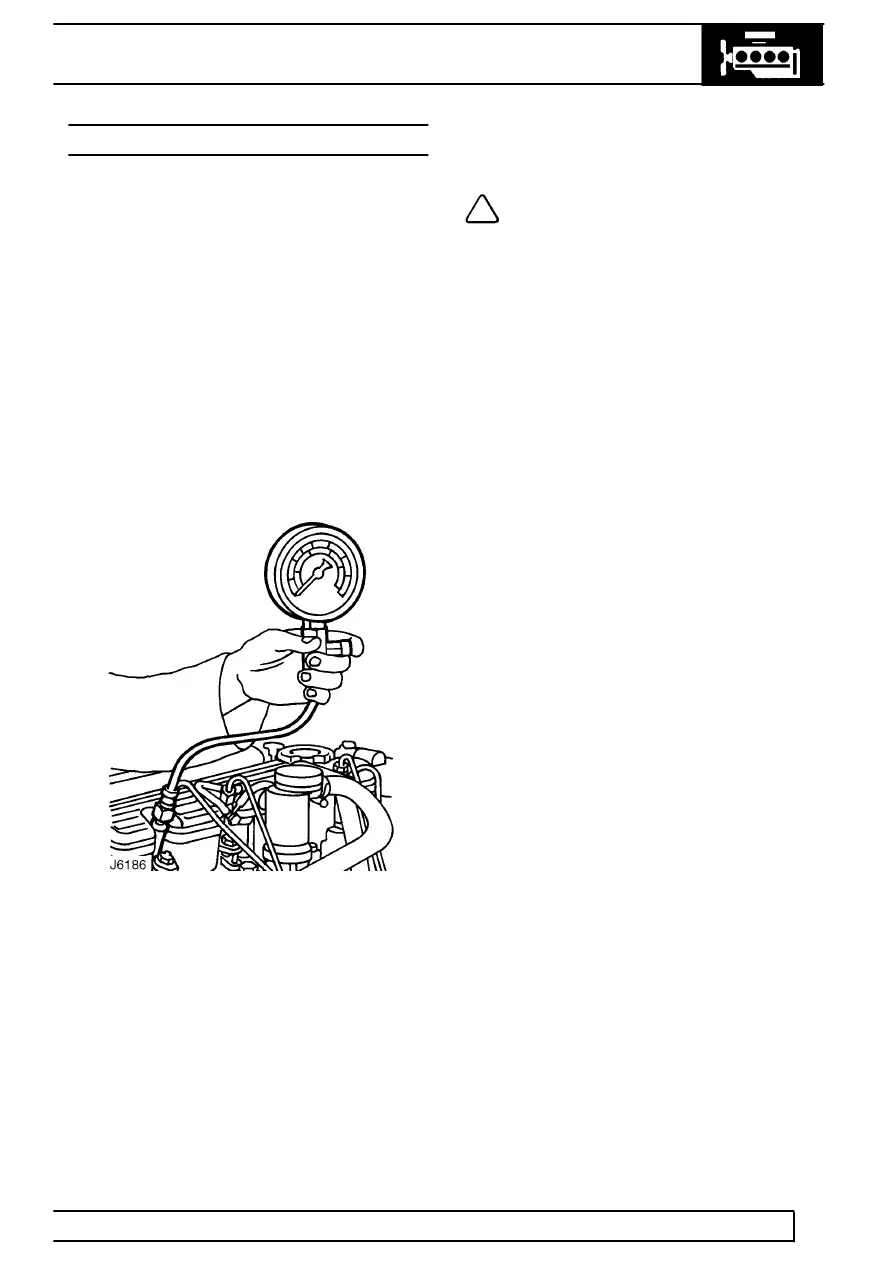300Tdi Defender

ENGINE
1
REPAIR
CYLINDER COMPRESSION TEST
Service repair no - 12.25.01
1. Start and run engine to normal operating
temperature.
2. Switch off engine.
3. Disconnect spill return hose and fuel pipe from
No.1 injector.
4. Remove retaining nut, release clamp and
withdraw injector from cylinder head.
See FUEL
SYSTEM, Repair, injectors
5. Disconnect electrical lead from fuel cut-off
solenoid at injection pump to prevent delivery of
fuel to injectors. On vehicles fitted with a digital
diesel shut-off valve (DDS) immobilisation
system, disconnect DDS multi-plug.
6. Ensure injector port is clean, If necessary, crank
the engine a few revolutions to remove any
loose carbon.
7. Fit dummy injector, from diesel compression
tester kit LRT-19-007, into the cylinder head and
clamp securely in position.
8. Connect flexible hose and gauge to dummy
injector as shown above.
9. Crank engine for 10-20 seconds and note
reading on gauge. The gauge will indicate the
compression of the cylinder and maintain the
reading until the pressure release valve on the
gauge is depressed.
Expected readings of a crank test, with vehicle
battery fully charged, compression ratio 19.5:1
should be 24 bar (348 lbf/in
2
).
10. Repeat test procedure for remaining clinders in
turn.
NOTE: A variation in compression
readings between cylinders is often a
better indication of an engine problem
than the absolute values of compression.
11. If compression is appreciably less than correct
reading, or varies by more than 10%, piston
rings or valves may be worn or damaged.
Low pressures in adjoining cylinders may
indicate a faulty cylinder head gasket.
